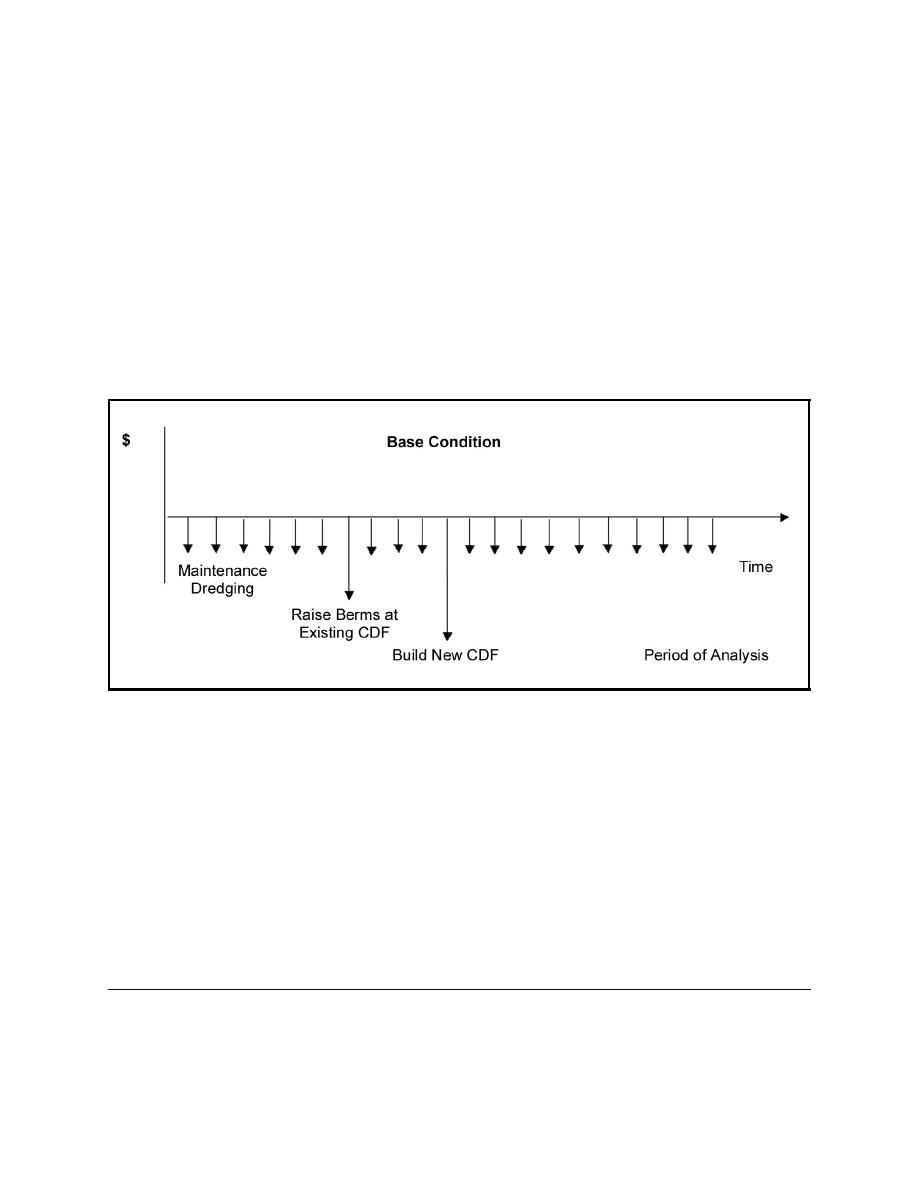 |
||
|
|
||
| |||||||||||||||
|
|
 ERDC TN-DOER-C27
July 2002
analysis should assume that the costs incurred for the new facilities are expended such that
the new facility becomes available just as the existing facilities reach their capacity.
2. Calculate the average annual cost of dredging and disposal for each scenario. Correlate the
cost of each action required (dredging, transportation, CDF construction, offsite disposal,
etc.) with the timing of the action. This is illustrated in Figure 1. Discount the cost from
the time incurred to its present value using the Federal discount rate1. Sum all the present
values and amortize over the period of analysis. The least-cost method will have the lowest
present value and lowest average annual cost. This method is the base condition and will
be used to measure the cost and benefits of physical separation. A conceptual example of
the base condition is depicted in Figure 1. It shows the existing CDF being expanded by
raising the berms and then later being replaced by construction of a new CDF of sufficient
capacity to last the remainder of the period of analysis.
Figure 1. Base condition
Formulating Physical Separation Alternatives
There are three general separation scenarios that could be formulated to extend the life of an existing
CDF:
1) Volume reduction of incoming material.
2) Capacity recovery, i.e., removal of materials previously placed.
3) Capacity recovery and volume reduction of incoming material.
1
Section 1.4.11 of the Economic and Environmental Principles and Guidelines for Water and Related Land
Resources Implementation Studies requires discounting of future monetary values to present values. The
discount rate is established each year and published in an Economics Guidance Memorandum by the Planning
and Policy Division of the Directorate of Civil Works.
3
|
|
Privacy Statement - Press Release - Copyright Information. - Contact Us - Support Integrated Publishing |